The scandal of the ‘Hastings Rarities’
By Jonathan Broughton, Dec 2011
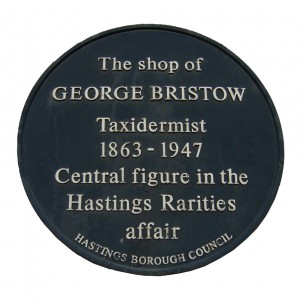 On the wall of No.15 Silchester Road, St Leonards, hangs a blue plaque (picture) commemorating the life of gunsmith and taxidermist George Bristow. A blue plaque generally signifies an acknowledgment of some special achievement. In many cases it is a lasting reminder of fame. In Mr. Bristow’s case, it may be a lasting reminder of infamy. George Bristow lived from 1863 to 1947. Between 1892 and 1930 he stuffed and mounted five hundred and ninety-four rare birds. Examples include, the Moustached Warbler, which breeds in Southern Asia and North Africa, the Slender-Billed Curlew, which inhabits the peat bogs of Siberia, and the Glossy Ibis which is found in Africa, Australia, and the Atlantic and Caribbean regions of the Americas.
On the wall of No.15 Silchester Road, St Leonards, hangs a blue plaque (picture) commemorating the life of gunsmith and taxidermist George Bristow. A blue plaque generally signifies an acknowledgment of some special achievement. In many cases it is a lasting reminder of fame. In Mr. Bristow’s case, it may be a lasting reminder of infamy. George Bristow lived from 1863 to 1947. Between 1892 and 1930 he stuffed and mounted five hundred and ninety-four rare birds. Examples include, the Moustached Warbler, which breeds in Southern Asia and North Africa, the Slender-Billed Curlew, which inhabits the peat bogs of Siberia, and the Glossy Ibis which is found in Africa, Australia, and the Atlantic and Caribbean regions of the Americas.
The definition of a rare bird is one that is not normally seen in a particular area, but is thought to be there naturally, and not escaped from an aviary or a private collection. Mr. Bristow’s remarkable ability to spot and shoot such an extraordinary selection of unusual birds made him a much sought-after supplier to collectors. And how amazing that these exotic specimens should be flying around East Sussex. Then, in 1962, the British Birds journal published a detailed account of their investigations into the ‘Hastings Rarities.’ The birds were a fraud. They were real, but not one of them had flapped over British soil. British Birds didn’t point the finger at George Bristow, but the newspapers weren’t so coy. It was a national scandal.
Why had he done it? The obvious explanation was money. A taxidermist at the turn of the 20th century might earn ninepence for a Meadow Pipit; five pounds for a Red-Throated Pipit. Imagine the thrill of owning a Pratincole from Asia that had mysteriously alighted at Pevensey Sluice. There was big money to be made from locally caught rare birds. And the collectors enjoyed the prestige of seeing their specimens catalogued in the official British List, which details the first sightings of alien birds on Britain’s shores. So how had he done it? During the 1800s, trade goods transported from one continent to another had to endure long sea voyages. Perishable goods suffered, especially if they arrived late. But by the end of the century, investment in commercial refrigeration aboard ships made transporting perishables possible, and profitable. Birds, procured for George Bristow by a person or persons unknown, were shipped across the oceans in refrigerated holds. They arrived in St Leonards frozen, but in as perfect condition as the day they were shot. Calculations suggest that Mr. Bristow earned around seven thousand pounds from this fraudulent trade. It was an ingenious scam that was never detected during his lifetime.
However since 1962, sophisticated technology in the tagging and tracking of birds has revealed surprising results. Many of George Bristow’s ‘rarities’ have indeed appeared, alive and well, in locations all across Great Britain. Often they are migrating and have stopped to feed and rest. Some birds spend the Winter here. On this evidence, and subsequent good record keeping, many of the species dropped from the British List because of Mr Bristow’s activities, have been readmitted.It seems unlikely that quite so many ‘rarities’ turned up in East Sussex during George Bristow’s lifetime, but his skills as a taxidermist cannot be denied, and evidence of his work can still be seen today in The Hastings Museum and Art Gallery in Bohemia Road. Justification enough perhaps, for a blue plaque in Silchester Road.
The ‘Rarities’ on display at Hastings Museum:
Night Heron
Squacco Heron
Little Bittern
Eastern Little Bustard
Ferruginous Duck
Sociable Plover
Killdeer
Great Snipe
Slender-billed Curlew
Collared Pratincole
Slender-billed Nutcracker
Wallcreeper
Isabelline Wheatear
White-spotted Bluethroat
Red-spotted Bluethroat
Tawny Pipit
Great Grey Shrike
Lesser Grey Shrike
Rose-coloured Starling
Pine Grosbeak
Two-barred Crossbill
Red-footed Falcon
Ivory Gull
White-winged Black Tern
Whiskered Tern
Gull-billed Tern
Golden Oriole
Indian Golden Oriole
Glossy Ibis

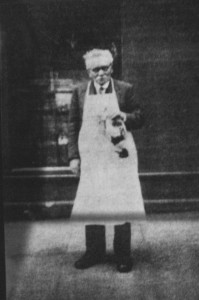
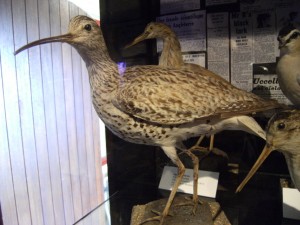
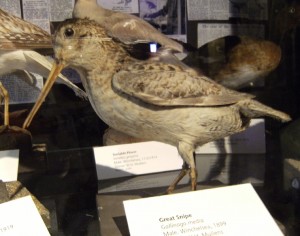
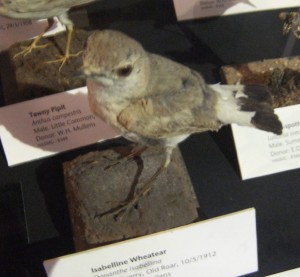
Absolutely right. Thanks Peter. The photograph title has been changed. JH.
Hi, the image noted as Isabelline Warbler is in fact an Isabelline Wheatear.